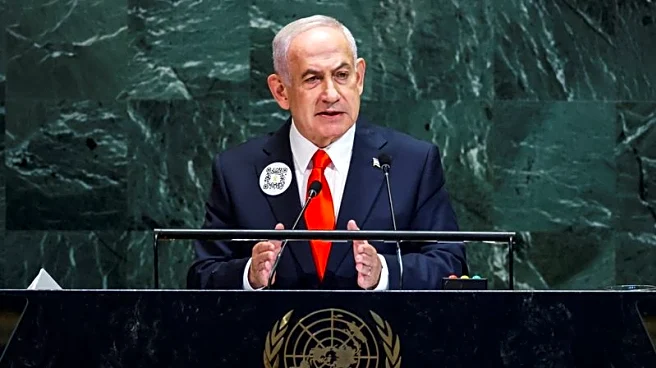What's Happening?
Iran's currency, the rial, has reached historic lows on the black market, trading at approximately IRR 1,080,000 to 1,130,000 per USD. This decline is attributed to U.S. and UN sanctions, which have severely impacted Iran's oil revenues and banking sector. The Central Bank of Iran has attempted to manage the turmoil through auctions and policy tools, but the rial continues to weaken under economic strains. Ordinary Iranians are turning to licensed moneychangers and cryptocurrencies to exchange currency, as formal banking channels are nearly impossible due to sanctions.
Why It's Important?
The depreciation of Iran's rial highlights the severe economic impact of international sanctions, which have restricted Iran's access to global markets and foreign currency. This situation underscores the challenges faced by countries under tight FX controls, where parallel markets emerge as citizens seek alternative means to protect their savings. The reliance on cryptocurrencies and informal networks for currency exchange reflects the adaptability of individuals in navigating economic hardships. The ongoing currency crisis may exacerbate inflation and social strain, prompting discussions on potential policy reforms and international negotiations.
Beyond the Headlines
The currency crisis in Iran mirrors similar situations in other countries with strict controls, such as Venezuela and Argentina, where parallel markets thrive due to limited official supplies. This pattern highlights the broader implications of exchange controls and sanctions on economic stability and corruption. As Iran grapples with these challenges, the role of cryptocurrencies in providing financial alternatives may become increasingly significant, potentially influencing regulatory approaches and market dynamics. The situation also raises ethical and geopolitical considerations, as the impact of sanctions on ordinary citizens becomes more pronounced.












